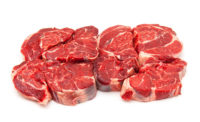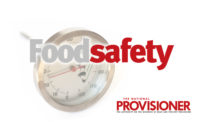Many very small and small meat processors occupy older buildings that weren’t originally built as processing plants. The age and characteristics of these buildings, combined with the class of business, create a very real risk of total loss fires.
These buildings often receive higher property rates than newer, larger, facilities. This puts very small, and small processors in a difficult position where they’re forced to choose between a fair price for their property insurance premium vs. adequate coverage for their building, contents, loss of income, and their customers’ property.
While the risk of fire is high in a small meat plant, there are efficiencies that can be gained by asking your agent to do a few things that will allow you to maximize your coverage and ensure that your customers’ products are covered at a fair price.
- Do a replacement cost estimate on your building(s). Most qualified agents will have access to replacement cost valuation software. This needs to include all the building square footage, and permanently attached smokehouses, coolers, freezers, and machinery. This is an opportunity to save a little bit on premium, because building rates are typically lower than contents.
- Add Property of Others coverage. If it’s not specifically on your declarations pages, it’s not specifically covered. You’ll need to calculate the value of the meat in process and held awaiting pickup (or in lockers.) Consider commodity prices for beef and hogs and think about the cost of wild game.
- Create a contents list. Take a minute to look at your shop and write down the major pieces of equipment. It’s easy for your grinder, mixer, stuffer, and vacuum packaging machines to add up to about $100,000. Also keep tabs on your retail inventory, boxes, plastic, spices, and meat you own.
- Get Business Income Coverage. Business income is based on your total less the cost of goods sold and continuing expenses. This is coverage for the suspension of your operations starting 72 hours after a loss. Your best bet is with Actual Loss Sustained coverage for 12 months. If you must have a limit, ask for the valuation to be actual loss sustained. In the worst-case scenario, you can ask for a monthly limitation up to 6 months.
- Spend some time with your spouse or business partner to do some business continuity planning. Once the smoke has settled, the clock is ticking. Your future will largely be determined by the steps you and your agent put in place for before and after the claim. Ask your local contractor if they’re comfortable with building a meat plant. If they’re not, seek out the advice of a qualified contractor with experience building a meat plant.
A fire can be catastrophic, but it doesn’t have to be a catastrophe. If you take some time to sit down with your agent to fully inspect your property insurance to find hidden gaps in coverage, and plan for what you’ll do after the loss, you can get some peace of mind knowing that your building, your customers and your business will be protected.




Report Abusive Comment